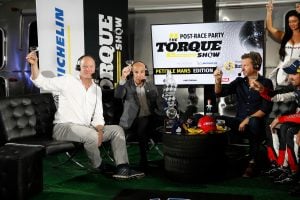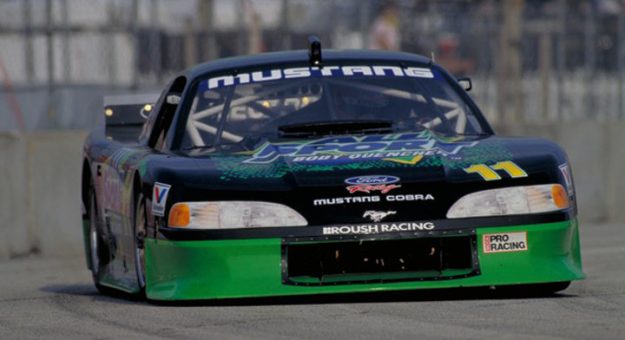Tommy Kendall’s racing career was one for the ages. Most people don’t realize how amazingly short and remarkable it was, as the California native raced full time for only 12 years.
“We hit it hard and fast,” said Kendall, who has picked up a few one-off rides here and there since his retirement in the late 1990s.
The son of an SCCA club racer, the apple didn’t fall far from the tree. Kendall grew up in La Canada, a tiny Los Angeles suburb. Its twisting canyon roads were magnets for fast sports cars and sport bikes. No doubt Kendall cut some tight apexes on the legendary Highway 2.
While studying at UCLA, racing started out as a side hustle for the 6-foot-4 Kendall, but soon turned into a way of life, as he won five series championships in his first five seasons as a professional driver. During that period, he finished among the top five in 54 of 64 races, claiming the top step of the podium 21 times.

Kendall kicked off his driving career in IMSA GTU, wheeling Clayton Cunningham’s Mazda RX-7 before landing a ride in a factory-backed Chevy Beretta.
The IMSA GT Championship was managed by John and Peggy Bishop with the blessing of NASCAR founder Bill France. The cars on the grid included the GTP prototypes, GTO for factory-based cars with displacements up to 6 liters and GTU for cars with less than 2.5 liters. At the time, GTU was the stomping ground for the Porsche 914-6, the Mazda RX-7 and Chevy’s new Beretta.
Kendall scored his first ride in Cunningham’s RX-7 after Jack Baldwin left the team. That’s also where he and legendary crew chief Dan Binks first joined forces, a pairing with which Binks originally had a toolbox full of skepticism.
“When Jack (Baldwin) left and Tommy came in, I didn’t know him. He seemed like a nice kid but none of us knew a thing about him beyond that he was going to UCLA and his dad was paying the bills for him to race,” Binks recalled. “We hit it off OK, but I honestly was pretty worried about it. And my wife said, ‘Great, you just got going and now this kid is going to ruin your career.’”
It took time for Binks to be convinced Kendall had the talent to succeed.
“When he first came on the scene, he did pretty good; Formula Mazda and some of those cars,” Binks said. “When we started, he ran fifth place, then third. He was a little bit slow in our terms and I asked him if he was OK. Then, it was like a light switch and he figured it out.
“He was amazing and one of the best drivers I have ever worked with. He paid attention to what the car needed and how to explain it, not being a car guy (mechanic or engineer). His communications skills were really good, with someone who is a backyard mechanic like I was at the time. He was able to work on the things I knew how to do, and he put it in terms to where I needed to go.”
Any misgivings vanished quickly. Kendall won back-to-back IMSA GTU championships in 1986 and ’87, raising the eyebrows of Chevy’s bowtie brigade, which was working to build the Chevy Beretta brand and reckoned the rising star could get the job done.
Kendall teamed with Max Jones in the Cars & Concepts Berettas. He won four races in 1988 on his way to the GTU crown, his third championship in as many years. Chevy then moved the team into the SCCA Trans-Am series and Kendall won yet another title.
As one of the hottest shoes in GT racing, Kendall had nothing left to prove in small-displacement cars, so he pulled on his big-boy pants and got a ride in the Bob and Bill Riley designed Chevy Intrepid GTP race car. It was built in the Pratt and Miller shops for the 1991 IMSA season.
The team was working hard to improve the car’s performance when Kendall suffered a high-speed crash at the end of the backstretch at Watkins Glen (N.Y.) Int’l. Kendall was seriously injured in the accident that played a role in a chicane being added to the course.
Kendall shattered both ankles and broke his right leg in two places. He endured a lengthy rehabilitation and eventually returned to the Intrepid for the 1992 season. However, after a dismal campaign, Chevrolet was no longer willing to foot the bill for the car and Kendall moved on.
